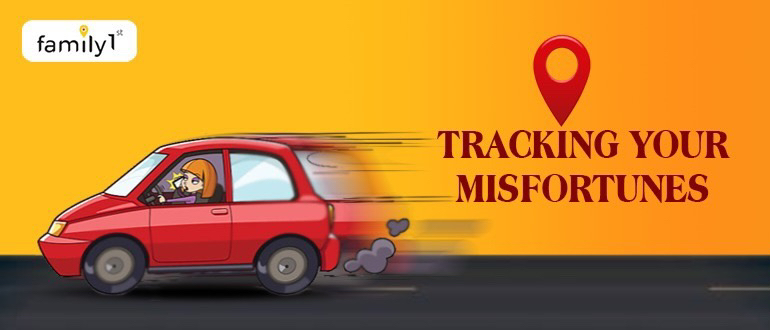Key Takeaways:
- Child tracking is using technology to monitor your child’s location and activity for safety and awareness.
- Parents can choose from six types of tracking, including GPS, geofencing, activity, screen time, calls, and internet use.
- Setting up tracking involves picking the right device, installing a suitable app, and setting clear rules with your child.
- A GPS tracker like Family1st offers real-time updates, safe zone alerts, and long battery life for reliable child monitoring.
Table of Contents
What Is Child Tracking?
Child tracking is using technology to know where a child is and what they are doing. It works through GPS devices, smartphones, or apps that show the child’s live location.
Parents use child tracking to keep their kids safe and make sure they follow daily routines. It helps during school commutes, outdoor activities, or emergencies.
What Are the Types of Child Tracking?
There are 6 main ways parents use technology to track their children, depending on what they want to monitor.
1. GPS Location Tracking
GPS location tracking helps parents see where their child is in real-time using satellite signals. It shows the child’s exact position on a live map and updates automatically.
2. Geofencing Alerts
Geofencing alerts let you create safe zones like school or home. You receive a notification whenever your child enters or leaves those areas.
3. Activity Monitoring
Activity monitoring tracks your child’s daily movement and physical activity. It logs steps, active minutes, and times of inactivity.
4. Screen Time Tracking
Screen time tracking shows how long your child uses their device and what apps they open. It allows you to set limits and reduce overuse.
5. Call & Text Monitoring
Call and text monitoring helps you review who your child communicates with. It flags unknown numbers and alerts you to risky or inappropriate messages.
6. App & Internet Monitoring
App and internet monitoring gives you control over what your child can access online. It blocks harmful content, filters websites, and tracks browsing history.
How To Track Your Child?
Tracking your child doesn’t have to be complicated. With the right tools and a little planning, you can stay connected and keep them safe without crossing boundaries.
Know Why You’re Tracking
Start by being clear about your reason. Maybe it’s to check if they reach school safely, manage how much time they spend online, or keep them safe during outdoor activities.
Choose a Device That Fits
Pick something your child is comfortable using. GPS trackers for kids or watches might do better for younger children, while teens usually carry a phone that can do a lot more.
Set Up a Tracking App
Install an app that helps you monitor what matters—like their location or screen time. Make sure it works well with their device and gives you reliable updates.
Turn On the Right Settings
Go into the app and set up things like alerts, boundaries, and daily limits. You’re in control of how much you want to see and when.
Try It Out
Before you rely on it, take a quick test run. Whether it’s a trip to school or the park, make sure the app gives accurate updates and alerts.
Talk to Your Child
Don’t skip this step. Let them know what you’re tracking and why. Keep it honest—this isn’t about spying, it’s about keeping them safe.
Update As They Grow
As your child gets older, they’ll need more space and trust. Adjust the settings, ease the controls, and make sure the rules grow with them.
Why You Need To Track Your Child
Tracking helps you stay involved without being intrusive. It keeps you informed, eases daily worries, and supports your child as they grow more independent.
Keep Them Safe
Whether they’re heading to school or visiting a friend, it’s reassuring to know they’re where they should be. In emergencies, quick access to their location can make all the difference.
Stay in the Loop
You don’t always need a phone call or text to check in. Location tracking gives you a quiet way to know what’s going on without interrupting their day.
Understand Device Use
With screen time and app tracking, you can get a clear picture of how your child uses their phone. It’s easier to guide healthy habits when you see the full story.
Support Their Freedom
Kids need space to grow, but they still need guardrails. Tracking helps you give them room while staying nearby in case they need help.
Notice Early Warning Signs
Sudden changes in routine or odd communication patterns might signal a problem. Having a way to catch those shifts early can help you step in before things escalate.
Keep Daily Routines on Track
Knowing they made it to school, practice, or home on time cuts out a lot of stress. It’s a quiet way to keep structure in their day without constant reminders.
Where And How To Put GPS Tracker On Child?
You can place the GPS tracker in your child’s backpack, pocket, or clip it to their clothing. Make sure it’s secure, easy to carry, and not easily removed.
To set it up, turn on the device, connect it to the tracking app, and test the location updates. Check that the signal is strong and alerts are working correctly.
Get The Best Child Tracker
Family1st Portable GPS Tracker helps parents track their child’s location in real time. It provides accurate updates through a mobile app, so you always know where your child is.
The device is small, lightweight, and easy to carry in a backpack or pocket. It works continuously for up to 14 days on a single charge, making it ideal for daily use.
Parents can set safe zones and get instant alerts if the child leaves those areas. The tracker uses fast 4G LTE for reliable connection, even when your child is on the move.








Next
Previous